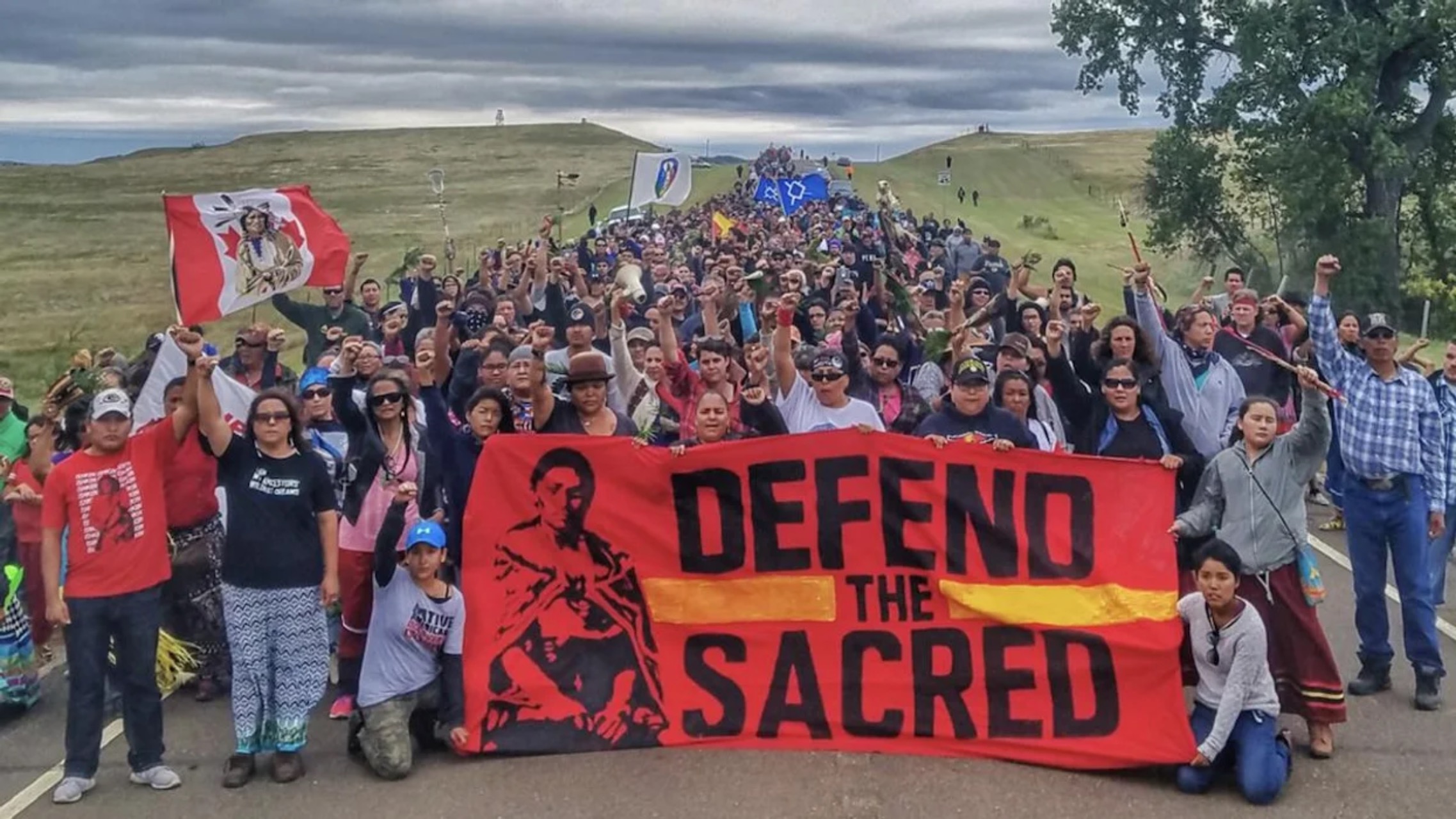
- Sustainable Planet -
- 5mins -
- 392 views
Indigenous Resistance Blocks Billions of Tons of Greenhouse Gas Emissions Annually
Resistance from indigenous peoples has disrupted the US and Canada’s annual carbon emissions by the equivalent of 400 coal plants’ worth of climate pollution.
Indigenous Resistance Blocks 400 Coal Plants’ Worth of Climate Pollution
Indigenous-led resistance to 21 fossil fuel projects in the U.S. and Canada has prevented or delayed the equivalent of one-quarter of those countries’ climate warming pollution, a recent report says. The analysis from the Indigenous Environmental Network (IEN) and Oil Change International finds Indigenous efforts have staved off more pollution than all the cars on the road in the U.S. and Canada, and about equal to 400 new coal-fired power plants. — EcoWatch

Indigenous Resistance Disrupts Billions of Tons of Greenhouse Gas Emissions
Indigenous Resistance has stopped or delayed greenhouse gas pollution equivalent to at least 25% of annual U.S. & Canadian emissions, according to a new report. The numbers don’t lie, say the Indigenous Environmental Network. Indigenous peoples have long led the fight to protect Mother Earth and the only way forward is to center Indigenous knowledge and keep fossil fuels in the ground.
The Indigenous Environmental Network and Oil Change International released a new report entitled Indigenous Resistance Against Carbon. The report analyzes the impact Indigenous resistance to fossil fuel projects in the United States and Canada has had on greenhouse gas emissions over the past 10 years.
From the struggle against the Cherry Point coal export terminal in Lummi territory to fights against pipelines crossing critical waterways, Indigenous land defenders have exercised their rights and responsibilities to not only stop fossil fuel projects in their tracks, but establish precedents to build successful social justice movements. Read the report in full here.
Source: IENEarth.org

INDIGENOUS PEOPLES ARE THE UNSUNG GUARDIANS OF THE GARDENS OF OUR PLANET
Did you know that while they make up less than 5% of the global population, indigenous peoples sustain many of the healthiest ecosystems on Earth? They manage more than one-quarter of all land on the planet, while protecting about 80% of global biodiversity. They also account for about 15% of the world’s extreme poor. Those are some sobering statistics.
Now, there is growing evidence coming to light from around the world that giving indigenous peoples control over the forest that they have called home for generations can be the wisest and most cost-effective way of safeguarding its best interests into the future.
It appears that simply awarding indigenous people formal title to their (own) land is proving to have a significant positive impact above and beyond other solutions such as making these regions into national parks. Learn more about this simple solution.

IMPACT: EDUCATE YOURSELF ABOUT INDIGENOUS PEOPLES
According to Amnesty International, there are 370 million Indigenous people around the world and spread across more than 90 countries. They belong to more than 5,000 different Indigenous peoples and speak more than 4,000 languages. Indigenous people represent about 5% of the world’s population. The vast majority of them – 70% – live in Asia.
Although they have different customs and cultures, they face the same harsh realities: eviction from their ancestral lands, being denied the opportunity to express their culture, physical attacks and treatment as second-class citizens.
Indigenous peoples are often marginalised and face discrimination in countries’ legal systems, leaving them even more vulnerable to violence and abuse. Indigenous human rights defenders who speak out face intimidation and violence, often supported by the state. In addition, individuals may be physically attacked and killed just for belonging to an Indigenous people.
Peaceful efforts by Indigenous Peoples to maintain their cultural identity or exercise control over their traditional lands, which are often rich in resources and biodiversity, have led to accusations of treason or terrorism.
Discrimination is the reason why Indigenous peoples make up 15% of the world’s extreme poor. Globally, they also suffer higher rates of landlessness, malnutrition and internal displacement than other groups.
Amnesty International has worked to defend the rights of Indigenous peoples in all regions of the world and demands that states apply and develop urgently needed laws to protect their lands, cultures and livelihoods.

